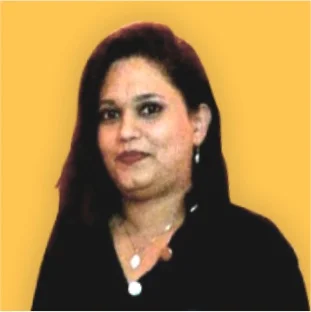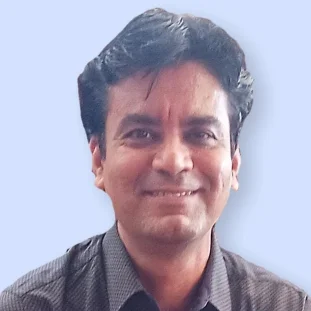
In the fast-paced world we inhabit today, modern medicine often takes the forefront in treating ailments. Yet, as technology advances, many individuals are turning back to traditional healing practices, recognizing the value of ancient wisdom in promoting holistic health. Among these time-honored methods is Agnikarma, an Ayurvedic practice that harnesses the power of heat for therapeutic purposes. This blog delves into the fascinating world of Agnikarma, exploring how this ancient technique can address contemporary health challenges effectively.
If you want a detailed Kundali analysis, please consult with our panel astrologers
The Roots of Agnikarma: A Brief Historical Insight
Agnikarma, rooted in the ancient texts of Ayurveda, is a specialized treatment involving the application of heat to specific points on the body. This technique, meticulously described in classical Ayurvedic scriptures, was developed by sages who possessed profound knowledge of the human body and its intricate energy systems. The primary objective of Agnikarma is to alleviate pain and balance the body's doshas—Vata, Pitta, and Kapha—by directing therapeutic heat to targeted areas.
Understanding the Science Behind Agnikarma
At the core of Agnikarma lies the principle that heat, when applied correctly, can stimulate healing and rejuvenation. This method is employed to treat a variety of conditions, including musculoskeletal disorders, chronic pain, and certain skin ailments. The heat application helps in enhancing blood circulation, reducing inflammation, and facilitating the removal of toxins from the body.
The procedure typically involves the use of specialized tools such as metal rods or stones, which are heated and then carefully applied to the affected areas. The duration and intensity of the heat application are meticulously controlled to ensure therapeutic efficacy while preventing any harm to the tissues.
If you want to learn astrology- Click here
Modern Ailments and Agnikarma: A Synergistic Approach
In today's world, where lifestyle-related disorders are rampant, Agnikarma offers a promising alternative or complement to conventional treatments. For instance, conditions like arthritis, sciatica, and chronic back pain, which are prevalent due to sedentary lifestyles and poor postural habits, can find relief through Agnikarma. By targeting specific points on the body, this therapy can alleviate pain, reduce stiffness, and enhance mobility, providing much-needed relief to those suffering from these debilitating conditions.
Additionally, Agnikarma has shown efficacy in treating certain dermatological issues such as eczema and psoriasis. The controlled application of heat helps in reducing inflammation and promoting the healing of skin lesions, offering a natural remedy for these chronic skin conditions.
The Procedure: What to Expect During an Agnikarma Session
For those considering Agnikarma, it is essential to understand what the procedure entails. A typical session begins with a thorough assessment by an experienced Ayurvedic practitioner, who identifies the specific points requiring treatment based on the patient's symptoms and overall health condition.
Once the points are marked, the practitioner heats the selected tool to the appropriate temperature. The heated tool is then gently applied to the skin in a controlled manner, ensuring that the patient experiences minimal discomfort. The heat application is usually brief, lasting only a few seconds at each point. Post-procedure, the treated area may be soothed with herbal pastes or oils to enhance the healing process and minimize any potential discomfort.
Get your accurate personalized Kundali made with Asttrolok for deep insights into your life.
Safety and Efficacy: Ensuring Optimal Outcomes
Agnikarma, when performed by skilled practitioners, is generally safe and well-tolerated. However, it is crucial to seek treatment from qualified Ayurvedic professionals to ensure the correct application of the technique. Proper post-procedure care, including the use of cooling agents and avoidance of strenuous activities, further contributes to the efficacy and safety of the treatment.
The benefits of Agnikarma extend beyond mere symptom relief. By addressing the root causes of ailments and promoting overall balance within the body, this ancient practice fosters long-term health and well-being.
Conclusion: Reconnecting with Ancient Healing Traditions
As we navigate the complexities of modern health challenges, it is worthwhile to explore and embrace the wisdom embedded in traditional healing practices like Agnikarma. This ancient Ayurvedic technique offers a unique approach to managing a wide range of ailments, providing relief through the therapeutic power of heat. By integrating such time-tested methods into contemporary healthcare, we can achieve a more holistic and balanced approach to health and wellness.
In conclusion, Agnikarma stands as a testament to the enduring relevance of Ayurveda in our lives. As we continue to seek effective solutions for our health concerns, revisiting these ancient practices may provide the healing touch we need in our modern world.
Read Also: Find Your Lucky Numbers: From House to Mobile with Ease
Comments (0)
Categories
Recent posts


जन्मकुंडली में ...
30 Aug 2023
Importance of Bhakoot Koota in Kundali ...
30 Aug 2023

.webp)














